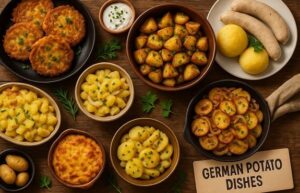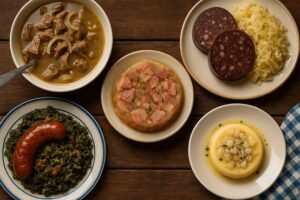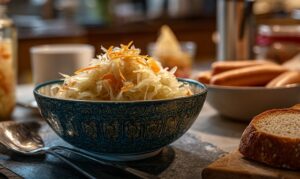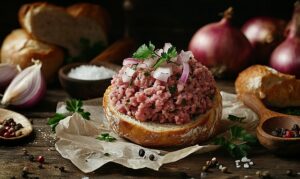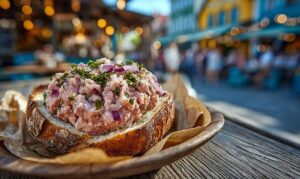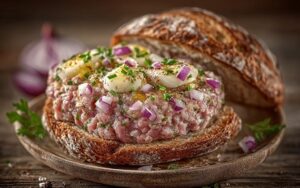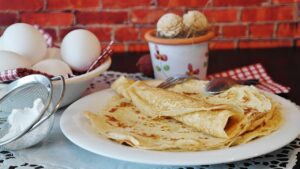From the Andes to the Abendbrot Table The potato may have originated in South America, but few countries have embraced it with as much enthusiasm and creativity as Germany. Today, it's hard to imagine German cuisine without it - from dumplings and soups to salads and crispy cakes. But this starchy staple didn't always belong to the German … [Read more...]
The Evolution of German Street Food
Where History Meets a Hungry Crowd When most people think of German cuisine, they picture heavy plates served in cozy taverns. But there’s another side to Germany’s culinary culture - faster, louder, and served from a sizzling grill by the side of the road. German street food has a rich and surprising history. It’s not just about currywurst … [Read more...]
Strange German Foods Tourists Don’t Understand
A Culinary Culture Shock Germany is famous for its sausages, pretzels, and beer - but behind the familiar favorites lies a world of unusual culinary traditions that often leave tourists wide-eyed and unsure whether to bite or back away slowly. To the uninitiated, these dishes might seem bizarre, even off-putting. But to locals, they’re everyday … [Read more...]
The History of the German Pretzel
A Twist That Tells a Story With its golden crust, chewy interior, and unmistakable knotted shape, the German pretzel (Brezel) is one of the most iconic baked goods in the world. But behind its satisfying crunch lies a story that stretches back centuries - through medieval monasteries, royal banquets, and bustling beer halls. In Germany, the … [Read more...]
Why Sauerkraut Is Germany’s Superfood
More Than Just a Pickled Side Dish Crunchy, tangy, and oddly addictive, sauerkraut may look like a humble pile of fermented cabbage—but it’s one of the most powerful foods in the German culinary tradition. For centuries, sauerkraut has been a staple in German kitchens, served alongside sausages, potatoes, and roasts. But what many don’t realize … [Read more...]
10 Surprising Facts About Mettbrötchen
To many Germans, Mettbrötchen is just part of life – an everyday food item as familiar as coffee and bread. But this simple-looking raw pork sandwich hides a surprising amount of history, culture, controversy, and quirky charm. Whether you’re a curious newcomer or a lifelong fan, here are 10 fascinating facts about Mettbrötchen that go far … [Read more...]
Why This Raw Pork Sandwich Terrifies Americans
In Germany, it’s a humble breakfast snack. In America, it’s a food horror story. Few culinary items generate such visceral cross-cultural reactions as Mettbrötchen – the raw minced pork sandwich that sits proudly on German breakfast tables and buffet trays. For Germans, it’s familiar and comforting. For many Americans, it’s shocking, even taboo. … [Read more...]
Mett vs. Hackepeter: What’s the Difference?
Germany has a long tradition of enjoying raw pork dishes, but if you’ve spent any time exploring regional German foods, you might encounter two confusingly similar terms: Mett and Hackepeter. Both refer to minced raw pork and are often served on bread rolls with onions – but they aren’t quite the same thing. So what exactly is the difference … [Read more...]
German Summer Salad – Sommersalat
German Summer Salad, or 'Sommersalat' as it might be called in Germany, is a delightful blend of fresh vegetables, fruits, and a tangy dressing that captures the essence of summer. This salad is not only a feast for the eyes with its vibrant colors but also a treat for the palate with its mixture of sweet, sour, and savory flavors. Ideal for … [Read more...]
Swabian Pancakes
Swabian Pancakes, also known as "Schwäbische Pfannkuchen," are a delightful dish hailing from the Swabian region of Southern Germany. This versatile and delicious recipe is perfect for both savory and sweet variations, making it a beloved staple in German households. Ingredients: 200g all-purpose flour200ml milk4 large eggsA pinch of salt2 … [Read more...]
- 1
- 2
- 3
- 4
- Next Page »
